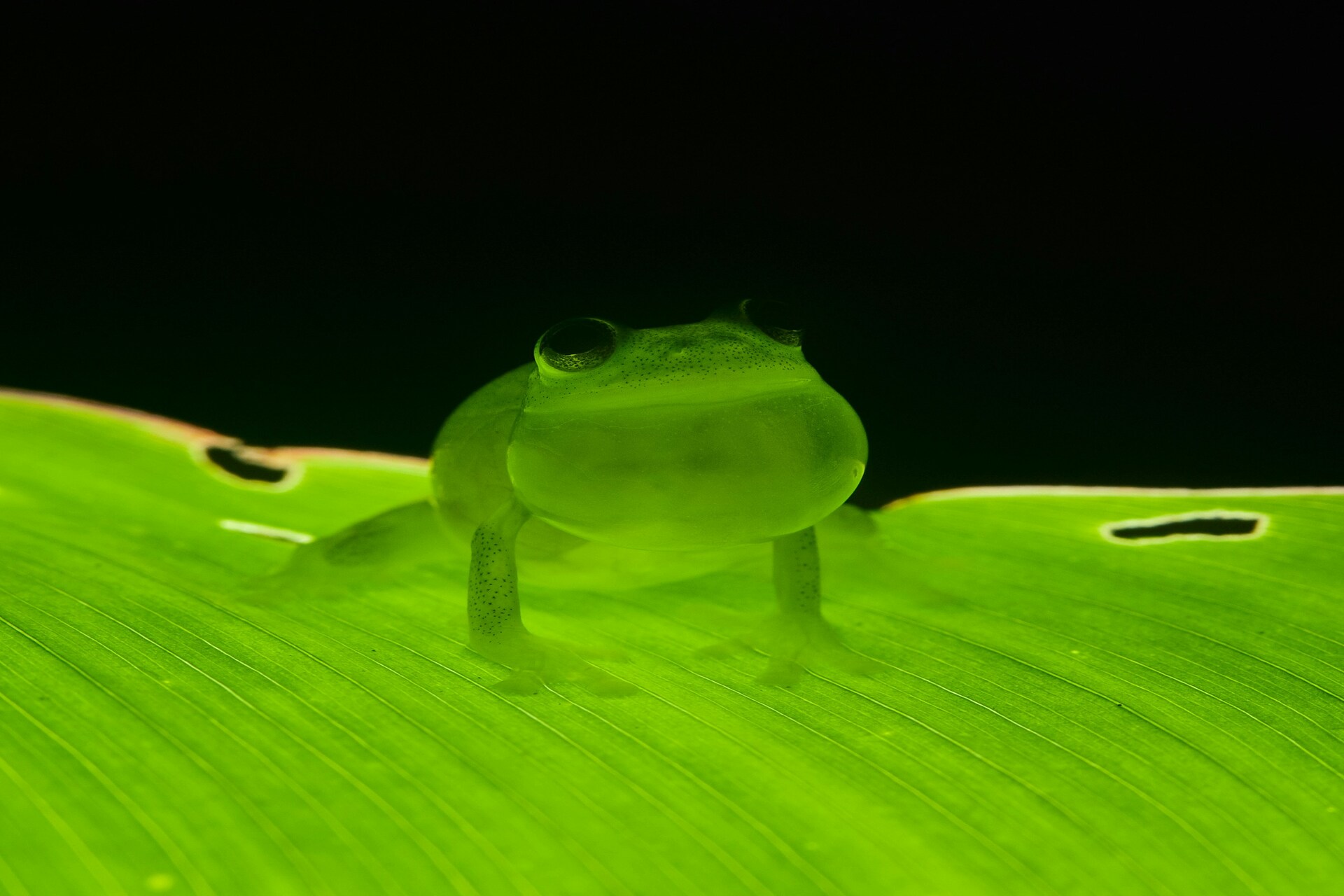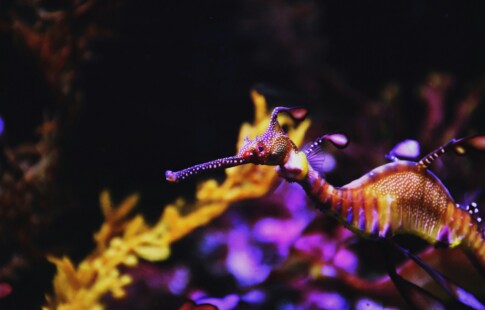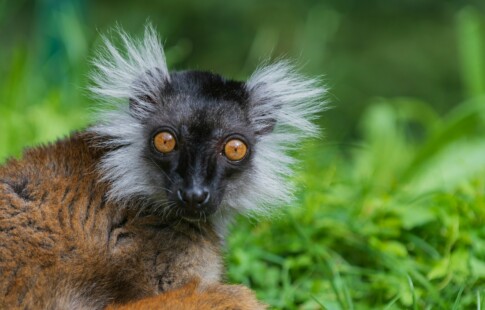
Why Conserving the Glamorous Glass Frog Must Begin Now
We are reader-supported. When you buy through links on our site, we may earn affiliate commission.
With its see-through skin and captivating emerald tones, the glass frog stands out as a jewel of the rainforest. Flip one over and you’ll see its beating heart, innards and liver through a translucent underbelly. On top of dazzling with its unique appearance, this fascinating amphibian plays a vital role in its ecosystem.
However, as the specter of climate change looms large over our planet, the future of these enchanting creatures is under threat. Explore these natural and human-made challenges along with their broader implications for the earth. You’ll also realize the urgent need to protect the exquisite beauty of these magnificent species before they fade into obscurity.
What Do We Know About Glass Frogs?
Perched on treetops and leaves across the lush mountainous forests of Central and South America, the glamorous glass frog embodies nature’s delicate artistry. These creatures belong to the Centrolenidae family and are classified into 158 species spread across similar habitat structures. They spend the mating season lower to the ground and the dry season high in the canopy.
They Hide Their Blood to Vanish in Plain Sight
Glass frogs have a knack for blending so neatly into their surroundings when asleep that it’s almost like they disappear without a trace. This phenomenon stems from their ability to siphon off approximately 89% of their red blood cells for storage in the liver.
Crystal-lined sacs within the liver act like mirrors, reflecting incoming light and rendering their bodies nearly invisible. The absence of brightly colored red blood cells makes the frogs much more transparent, helping them seamlessly blend into their environs.
They Have Unique Eyes
Unlike their arboreal counterparts, glass frogs have forward-facing eyes with horizontal pupils. This characteristic gives them binocular vision, helping them accurately judge distances when hunting for food.
They’re Nature’s Ultimate Ninja Dad
The male reticulated glass frog is the epitome of dedicated parental care. After the female lays eggs on leaves overhanging water, the male guards them until they hatch, ensuring their safety. These dads often contend with carnivorous rainforest wasps and other lurking predators looking for an easy meal.
The way the frogs kick off intruders with incredible speed and precision has earned them the title of ‘Ninja Dad’ by National Geographic.
They Live in Diverse Dwellings
Glass frogs inhabit various habitats, each with unique challenges and charms. Different types of glass frogs often live pretty close together, from the misty cloud forests of Costa Rica and Ecuador to the steamy jungles of Argentina. However, there’s sufficient genetic variance to classify them as separate species.
They Can Communicate Using Visual Signals
Researchers observing glass frogs residing within the spray zones of waterfalls in the Ecuadorian rainforest made a startling discovery. They noticed that the creatures waved their limbs and bobbed their heads in addition to the usual acoustic sounds emitted when communicating.
Scientists believe the frogs need to add this visual signaling because of their noisy environments, rendering vocalizations alone ineffective. They also assumed the bodily movements represented a tactic to increase conspicuousness when attempting to attract females.
A Species Facing Extinction
Nearly 50% of glass frog categories monitored by the International Union for Conservation of Nature (IUCN) face declining populations. Around 11 species are listed as critically endangered, with 19 as vulnerable. Climate change and its multi-pronged effects remain the biggest driver of this crisis. Increasingly frequent floods, droughts and wildfires directly impact animal and plant life.
Biodiversity Concerns
As global temperatures reach critical levels, the impacts could be beyond reversal. For example, the Amazon rainforest will become 3.5°C hotter in the next 100 years, potentially causing massive biodiversity loss.
Additionally, Glass frogs are ectothermic, meaning their body temperature depends on external environmental conditions. Even slight variances can significantly affect their metabolism, behavior and reproductive success. Warmer weather can disrupt breeding cycles and alter the sex ratios of offspring.
Habitat Loss and Fragmentation
Climate change alters precipitation patterns, causing shifts in vegetation and habitat suitability. Moreover, continuous human development at the cost of increased deforestation means habitable areas grow smaller and the amount of food and space reduces.
Glass frogs are good bioindicators of their ecosystems, which means you can tell how healthy an area is by observing their populations. Many species are forced to move, adapt or die out without the right weather conditions and ecological features.
Threats From the Exotic Pet Trade
The attractive appearance, transparent abdomens and remarkable camouflage skills of glass frogs have made them sought-after. This demand creates a market incentive for locals to capture them for sale in the exotic pet trade.
A report by the Convention on International Trade in Endangered Species of Wild Fauna and Flora (CITES) shows a 58% increase in live glass frog imports from 2020 to 2021. Keeping wild animals as pets is detrimental to their survival. Such actions also constitute cruelty to keep them in captivity.
Recognizing this threat, these creatures have recently received protection under CITES due to concerns about trade impacts in America and Europe. However, they require more stringent safeguards against pet trade and climate change pressures to prevent their extinction.
Now’s the Time for Decisive Conservation Efforts
In the face of escalating endangerment, now is the critical juncture for implementing decisive conservation efforts to ensure their survival. These strategies are essential to protecting glass frogs from the detrimental impacts of their dire situation.
Habitat Protection and Restoration
Establishing and expanding protected areas, such as national parks and reserves, is crucial in conserving glass frog habitats. These protected areas provide safe havens where endangered animals can thrive without the threat from human activities like deforestation and urbanization.
Community Engagement
Involving local communities in conservation efforts is essential for the long-term success of glass frog protection. Educating and empowering communities to value and protect their natural resources fosters sustainable practices that benefit both glass frogs and human populations.
Collaboration and Partnerships
Collaboration among governments, non-governmental organizations, researchers, and local communities is essential for effective glass frog conservation. By pooling resources, expertise, and knowledge, stakeholders can develop comprehensive conservation plans that address the diverse threats facing glass frogs and their habitats.
Conserve Glass Frog Species Today
Like any wildlife, the survival of glass frogs is fundamental to the planet’s well-being. These creatures face critical challenges that require significant human intervention. Now’s the time to take action and address these issues for the good of everyone today and tomorrow.
Share on
Like what you read? Join other Environment.co readers!
Get the latest updates on our planet by subscribing to the Environment.co newsletter!
About the author
Maria Visser
Maria serves as the Assistant Editor of Environment.co. A true foodie and activist at heart, she loves covering topics ranging from veganism to off grid living.





